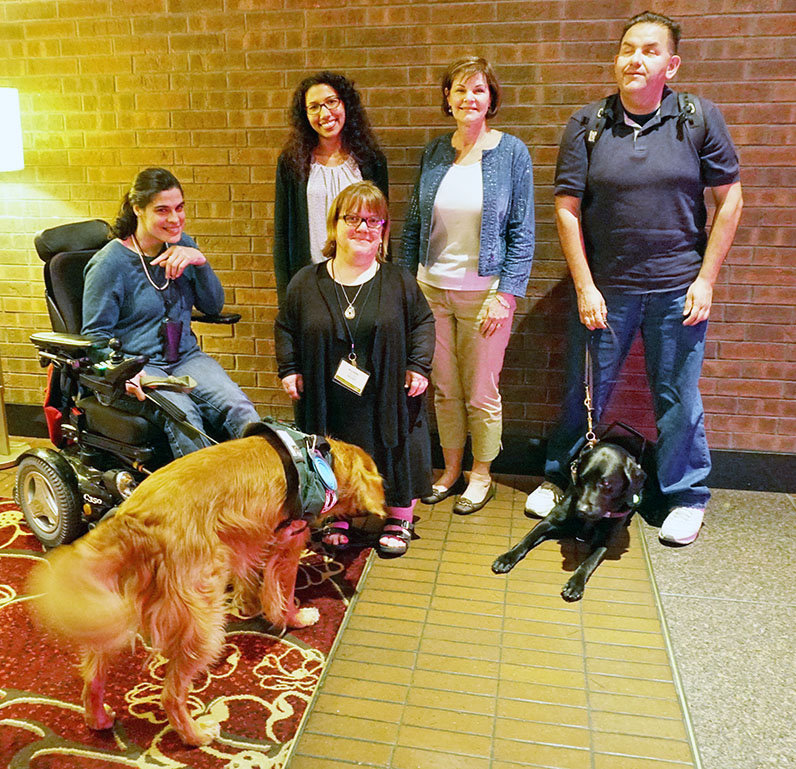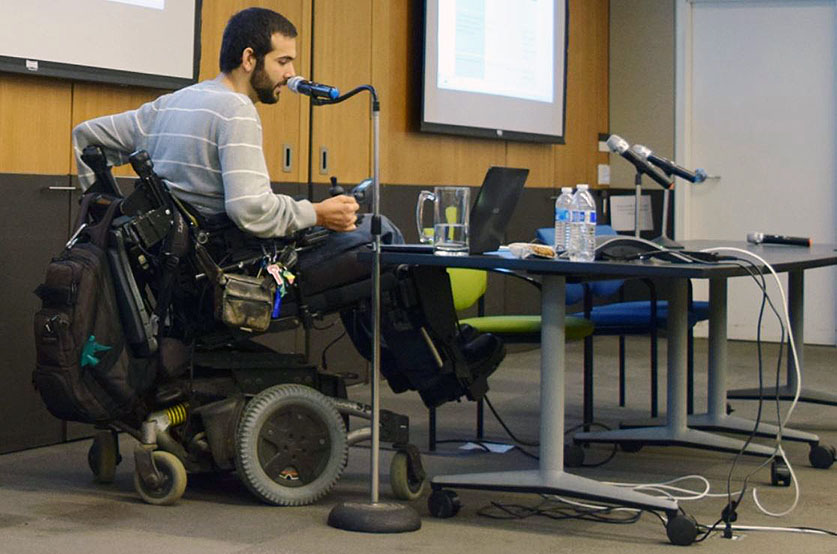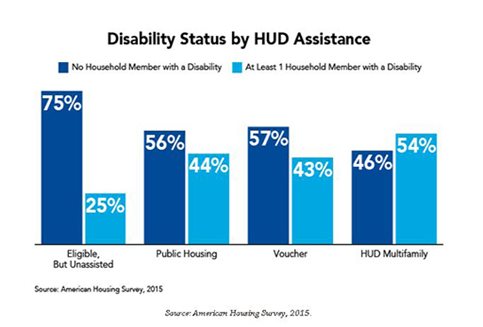It’s obvious to me that if [people with disabilities] are not in the room, we are not included in the discussion at all as a community of people. This is how I ended up effectively homeless for four months,” Melissa Mitchell, disability ambassador

“Overall, I found the NeighborWorks event very welcoming and helpful,” comments Mitchell, who was born with cerebral palsy. “But when diversity was discussed in the workshops I attended, it was mostly all about race; disability wasn’t included. Yet, it’s the only minority group anyone can join at any point in their lives. In fact, it’s estimated that, on average, people will spend 12 years of their life experiencing some type of disability, even if it’s just from advancing age. And consider this: While women may be paid 50 cents for every dollar men get, people with disabilities get only 20-30.”
Chase began partnering with the World Institute on Disability about three years ago to encourage the organizers of the conferences it supported to become more accessible to the disability community. The bank funds scholarships so that those with disabilities can attend conferences that are particularly relevant to them—such as housing and community development.
“Access is the No. 1 housing complaint,” notes Kat Zigmont, director of operations for the World Institute on Disability. “That’s why we’re always welcomed at housing conferences.”
The institute works with conference organizers to ensure that accommodations for persons with disabilities are considered and planned for in advance. Hotel walkthroughs should assure sufficient rooms can be accessed without stairs, through doors wide enough to accommodate wheelchairs. (Likewise, there should be bathrooms large enough to allow wheelchairs to maneuver.) If buses are needed to travel from one venue to another, wheelchair-accessible vehicles must be available. These are some of the more obvious details that must be checked; there are many that only those with disabilities would anticipate. (Consider reading the recent bestseller Hunger by Roxane Guy to learn more about the difficulties facing the obese when attending events.)
In addition, presenters require special instructions. For those with vision impairments, copies of presentations should be available in advance, and instructors should be trained to describe what participants are seeing, rather than say, “As is clear in this chart.” Likewise, captioning services should be offered for all plenary sessions and workshops to be attended by persons with disabilities.
Richard Rueda is another disability ambassador who attended the Kansas City NTI. Visually impaired himself, Rueda has spent the past two decades working with the blind and broader disability community in the areas of vocational counseling and nonprofit leadership.
“As one of the few conference attendees with a visible disability, I am pleased to report that my experience [at the NTI] was more positive than not, with accommodations that made my participation flawless and provided equal access to course materials and other resources,” wrote Rueda in a blog post. However, he also was helped significantly by personal technology such as the “Seeing AI” iPhone app, which “reads back” door and wall signage, as well as handout materials. Aira, a real-time, human-narrated interpreter service, used in conjunction with a smart phone and Google glasses, aids him in identifying buildings and both natural and manmade obstacles. And then, of course, he has his service dog, Odif.

However, Rueda believes additional work is needed to incorporate disability into the DNA of the conference accommodations and narrative. He suggests that NeighborWorks host a course on how to adapt training in financial literacy, nonprofit leadership and affordable housing development to include needs of the disability community.
A good place for each nonprofit community-development organization to start incorporating this lens into its own DNA is to ask how much it knows about the people in its community who have disabilities, as well as what it can do to make all of its own meetings accessible. WID offers these tips:
How to ensure community meetings are accessible to and inclusive of people with disabilities
Choose a venue accessible by public transit.Many people with disabilities use public transit as their primary form of transportation, which means venues close to stops are more accessible.
 Make sure the venue itself is accessible.
Make sure the venue itself is accessible. There are many considerations under this umbrella, but to start, make sure your chosen venue includes alternatives to stair access, such as elevators. Accessible doors have automatic openers and, ideally, the meeting space should be close to the main entrance so that people who are blind can easily locate it.
Ask about accommodations before the meeting.
People with disabilities are often wary of attending events because they have previously had trouble securing the accommodations they need. You can instill confidence in your attendees with disabilities and make your meeting more inclusive from the start by asking about desired accommodations on your registration form and then securing them early.
Engage with people with disabilities who attend your meetings and ask about their experience. Here’s a few examples of questions you can ask:
- “How are you enjoying the event?”
- “Why haven’t we seen you here before?”
- “Do you have any feedback for us?”
To avoid leaving any of your attendees with disabilities out of the loop, make print materials (such as meeting schedules and other handouts) available in electronic format. Captioning your sessions for people who may have hearing loss or a cognitive disability is another way to ensure equal access.
Prepare your presenters.
As noted earlier, presentation norms can exclude people with disabilities. To avoid this, instructors should describe graphs and photos for people who are blind, for example.

